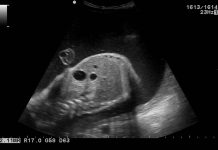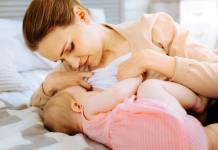What is Papular Urticaria?

Due to its severely itchy nature it is very difficult not to scratch papular urticaria leading to the spots becoming crusted and possibly infected. Then they become puss-filled and sore. Sometimes one new spot can cause old spots to resurface and itch intensely.
The spots usually remain for a few days or to a few weeks and may leave persistent marks scars or scratches in case they have been itched deeply. With the change of location Papular Urticaria may clear up for a while, in some cases for years and then recur suddenly and unexpectedly. There are no reported internal discomfort or complaint associated with Papular Urticaria.
Signs and Symptoms
Papular Urticaria can effect both girls and boys. Children between the ages of 2 and 7 years are often most particularly vulnerable during summer months. This is the time when they are most likely to go out and involve themselves in outdoor activities.
Let us see few signs and symptoms that you should look out for in your baby for early detection and treatment.
- Small Raised Patches on the skin: Look for small raised skin on the exposed skin of your baby which turn into firm reddish-brown bumps at the sites of old insect bites. These bumps are extremely itchy and usually found in a cluster on exposed skin areas such as neck, forearms, the faces, and legs.
- Shifting Nature of the bumps: The bumps can clear up from one area of your child’s body and then reappear in another location but is usually not contagious and does not affect the whole family. Children who are sensitive to insect bites are the ones that get affected the most.
- Cluster Formation: From the appearance of the lesions in Papular Urticaria they look like a crops of bug bites. These crops or clusters are usually triggered by a single bite or few bites from any insect.
- Pruritus or Itching: This is the initial manifestation of Papular Urticaria. This itching can get so intense that it becomes inevitable for your baby to scratch to get relief. Incessant scratching leads to crusting of the lesson making it more more to infections. Scratching new bumps can even trigger old lesions from cropping up.
- Symmetrical Distribution: Right after the appearance of the symptom of itching occurs the onset of lesions. The distribution of these lesions appear somewhat symmetrical which may be localized in the area of the insect bite although the lesions may spread to other parts of the body.
Treatment
Though Papular Urticaria is known to be a very annoying disorder, it is not generally a serious one. It tends to clear on its own within few days or several days and weeks and can also spontaneously recur.
As a parent your primary aim for treatment of Papular Urticaria is to provide relief from the itching and discourage constant and/or violent scratching. This will allow you to control the spread of infection from the lesions.
- Wash Bedding: Wash bedding in hot water to prevent bed bug infestation. If you have pets check for fleas and insects in the bedding and take anti-insect measures.
- Repellent: Make your child apply insect repellent and calamines.
- Bare Skin: Keep your child’s skin exposure to a bare minimum to prevent rash.
Several over the counter treatment options are also available to address the symptoms of itchiness and prevention of infection. These are:
- Topical Steroids: Topical Steroids in the form of creams are recommended treatment that is immediately applied on the affected skin and as soon as the lesions develop.
- Topical Soothing Agent: Calamine lotions and other topical soothing agents are beneficial in helping to relieve the symptoms of itchiness
- Antiseptic Creams or Ointments: These are often prescribed to prevent infections happening due to extreme scratching.
- Oral Antihistamine: These are found to be more beneficial in reducing the symptoms of itchiness and also in reducing the development of lesions.
Fortunately for you as a parent, kids usually outgrow this sensitivity.












